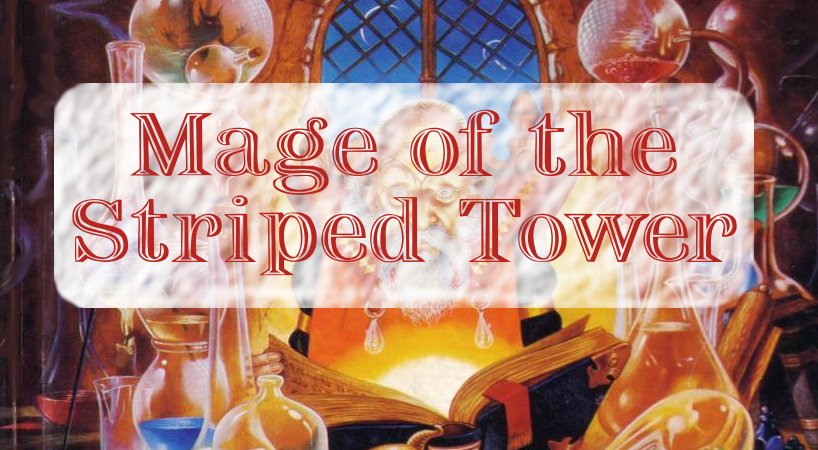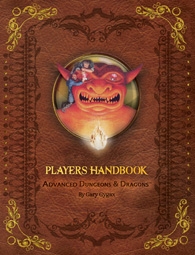ABBOR-ALZ
The rocky hills, which run east and west between the Nesser River and
Woolly Bay, are known as the Abbor-Alz. The northern verges of the
hills are relatively safe, and these are claimed by the Duchy of Urnst,
as are those softer highlands which are covered by the Celadon Forest.
The central and southern portions are very arid, however, and wild
tribesmen dwelling within these hills turn back all intruders – if they
manage to return at all. These hills are so rough and precipitous as to
preclude mounted movement or even thc passage of organized bodies of
soldiers, so no aggression has proven successful in clearing these tall
heights. Occasional adventurers will return with tales of having
prospected within these hills, stories of encounters with the natives,
monsters, and the like, but most can not be believed. There certainly
are riches within the Abbor-Alz, however, for Urnst has productive mines
in that part which is held by the Duchy.
How far the hills continue into the Bright Desert is unknown. The
peoples dwelling in and beyond the Abbor-Alz are as unfriendly as the
highland tribesmen.
CAIRN HILLS
The northward- thrusting arm of the Abbor-Alz (q.v.) is known as the
Cairn Hills. These hills surround Midbay on Nyr Dyv and form the
borderland between territory claimed by Greyhawk City and that of the
Duchy of Urnst. Several thousand gnomes dwell in the central portion of
the Cairn Hills, halflings enjoy its lower Northern slopes, while many
dwarvenfolk live in the area where it meets the Abbor-Alz and the hills
become young mountains. In the hinterland below Nyr Dyv’s Midbay, where
the hills are very rugged, there have been strange burial sites
discovered from time to time. These rich finds are of a people unknown
even to the demi-humans, evidently predating them! Discoverers returned
with harrowing tales of horrid guardians, death, and worse; but carried
back ingots of precious metal, gems, and other treasures as well. The
discovery of these burial sites gave the hills their name, and also
makes them a target for many foolhardy adventurers.
There are no settlements east of the marshes around the Upper and
Lower Neen Rivers until the eastern edges of the hills are reached.
HESTMARK HIGHLANDS
The Hestmark Highlands run northward up the coastline of South
Province from the town of Dullstrand to the mouth of the Flanmi,
branching northwestward into the Glorioles. These hills have always been
a rallying point for disaffected humans, as their remote location and
rugged character have enabled their demi-human inhabitants to remain
free of the rule of the Overking or his minions. Many gnomes and dwarves
live in the Hestmarks, and free-spirited men have their villages amidst
the shelter of these hills as well. The area is well known for its
precious metals and gems, and for this reason it is often raided by
forces of the Overking who badly need the wealth thus obtained.
Medegians, troops from the Herzog of South Province, and imperial
soldiery alike probe these hills all too often. Its inhabitants, doughty
in the beginning, have become battle-hardened veterans because of these
continual skirmishes and raids, and with the men and elves of Sunndi
are beginning to conduct their own forays into the lowlands beyond the
Hestmarks in reprisal. The independent town of Dullstrand (pop. 5,5OO)
and its environs proclaims neutrality in these matters, but it is
probable that secret aid is given to the insurgents in the hills.
Free-booters certainly find safe haven in the town, and its forges make
weapons and armor which are not seen by the Overking or his men-at-arms.
KRON HILLS
It is estimated that nearly 20,000 gnomes live within the region of
the Kron Hills. These heights spring eastward from the Lortmils and
reach almost to Nyr Dyv. Their verge forms the southern boundary of
Veluna, then stretches beside the Velverdyva for a time before peaking
in the heart of the Gnarley Forest, where many Sylvan Elves happily roam
over their crests. Their southern slopes demark the end of the Wild
Coast region and are a part of the northern region of Celene. Some
dwarven enclaves exist in the Kron Hills where they butt against the
Lortmils, although the number of such demi-humans is not known. The
gnomes of the region were instrumental in the organization of the army,
which drove the humanoid hordes from the Lortmils (and the Kron Hills).
They likewise served with honor in the host, which defeated the Horde of
Elemental Evil in the battle above Verbobonc.
The Kron Hills are mined for metals, precious metals, and gems. The
upper slopes are quite fertile and grow many crops in sheltered valley
and glen. Quite a number of scattered enclaves of humans live in peace
with the gnomes and other demi-humans of the area, save in the Gnarley
Forest, where the Olvenfolk are isolationist.
LESSER HILLS AND HIGHLANDS
Blemu Hills: This chain of hills runs from a point about level with
Belport southward to the town of Knurl, the Teesar Torrent cutting their
eastern verge. These hills form the southeastern boundary of the Bone
March. At one time they were home to certain demi-human folk, but tribes
of Celbit, Jebli, and Euroz now infest the place.
Bluff Hills: The western terminus of the Griff Mountains slowly
decreases into a series of rugged ridges and steep hills. This range
separates the states of the Bandit Kingdoms from the lands of the Rovers
of the Barrens. The former now occupy and claim the Bluff Hills as
their territory, as they do the whole of the Fellreev Forest. The nomads
to the north are too weakened to effectively dispute this move. The
Bluff Hills are said to contain small deposits of copper and gold.
Numerous monsters roam the area, and many ogre hands make it their home.
Drachensgrab Hills: The low mountains of the same name found in the
Pomarj are surrounded by these hills. Rich in valuable minerals and
gems, these hills have always been the home of many terrible beasts and
monsters, which had to be contended with by the humans dwelling along
the lowland coasts. Now that the area is in the hands of humanoid
hordes, many of the monsters there will undoubtedly be enlisted into
their ranks. Legends say that these hills hide the resting-place of one
or more powerful creatures who may someday return to life.
Flinty Hills: This broad and deep hand of hills marks the southern
end of the Rakers. The eastern shoulder, and an arm, which projects
southward for many leagues, define the lower boundary of Bone March and
the easternmost territory of Nyrond and Almor. The portion covered by
the Adri Forest (west of the Harp River) is Almorish. The area is well
endowed with minerals. Numerous halflings inhabit its southern portion,
while many gnomes dwell to the north. The far western span of the Flinty
Hills is within the Gamboge Forest (q.v.).
Good Hills: This is a range of rolling highlands in Keoland east of
Stench and running all the way to the middle of the border with the
Yeomanry, with the Javan River marking its western edge. These lands are
home to many halflings and gnomes. They are also the source of
considerable mineral wealth.
Gull Cliffs: The headlands which rise steeply along the coast west of
the isles of the Sea Barons are known as the Gull Cliffs (or
Gullcliffs) because so many sea birds nest among these hills and sea
cliffs. The town of Roland nestles amongst the hills, a major port for
commerce to and from Rauxes and the sea.
Headlands: The heights of the central portion of the Onnwal Peninsula
are known as the Headlands. This spine runs from the city of Irongate
along about half of the peninsula, forming cliffs on the Azure Sea
coast. They are home to many dwarves and some gnomish groups as well.
Hollow Highlands: The north-south hill chain which divides the fiefs
of Idee from Sunndi is called the Hollow Highlands due to the mining and
burrowing which has taken place there for so long. Dwarves, gnomes, and
halflings dwell amidst these hills. Although they are not particularly
rich in minerals or gems any longer, their beauty and fertility keep
this demi-human population high. The minions of the Overking do not
venture into the Hollow Hills without strong forces.
Howling Hills: These hills are just below the southern edge of the
Cold Marshes, a portion being divided from the main body by the Dulsi
River valley. The eastern hills are now part of Iuz and undoubtedly home
to all manner of hideous creatures and savage humanoid tribes who
exploit their metals. The western portion is sacred to the Wolf Nomads
as a burial place, and they have stoutly defended this area from any
incursion of men or humanoids from Iuz. Several large battles have
reportedly taken place in and around the wedge of hills between the
Blackwater and Dulsi for this very reason, and Iuz likes not such
thwarting.
Iron Hills: The series of highlands reaching eastward from the city
of Irongate and demarking the fiefs of Ahlissa and Idee in the west are
known as the Iron Hills. Most of these hills are in the hands of the
Iron League. Very high-grade ore is taken from the mines there, as are
several sorts of precious metals. Dwarves and gnomes do much of this
mining.
Little Hills: The Jotens turn to very high hills as they come to the
Javan River valley, and these hills turn southward as if following the
river course. These looming hills can be called little only in
comparison to the Jotens and Crystalmists beyond, and this is evidently
what was done by the yeomen who named them. Considerable numbers of
demi-humans dwell in the Little Hills, along with communities of men.
The town of Longspear, in the foothills of the Littles, is an active
trade center. The soldiers from this area are renowned for their
ferocity in battle, human and demi-human alike.
Lorridges: These sharp ridges and hills are found at the northern end
of the Lortmil Mountains. Some dwarves and gnomes have their dwellings
and mines therein. These hills are about evenly divided between Gran
March, Bissel, and Veluna. The pass between these hills and the
foothills of the southern horn of the Yatil Mountains is the major entry
point to eastern Flanaess. The Yatil foothills are known as the
Northern Lorridges, but they belong to the Highfolk (q.v.), and their
gnomish inhabitants serve the Olvenfolk.
Sepia Uplands: Perrenland now claims most of the block of highlands,
which are the lesser heights of the Clatspur Mountain range. The Wolf
Nomads hunt in the northern portion of the range, and the hills within
the Vesve forest are unclaimed by any humans. Some mineral deposits are
suspected to be within these hills.
Spine Ridge: The unwholesome Vast Swamp is butted on the south by a
chain of rising hills which terminate on a great plateau in the center
of the Tilvanot Peninsula. These hills, the Spine Ridge, are supposedly
rich in precious metals and gems, but they are too dangerous for normal
exploitation, being home to numerous humanoids and monsters.
Stark Mounds: The many-spurred Crystalmist Range thrusts some low
mounts and high hills eastward toward the Javan River below the joining
of the Real-stream. These mounts and hills divide Geoff from Stench. The
Stark Mounds are probably old and weathered mountains. They end at the
east bank of the Javan and are claimed mainly by Geoff. While some
dwarves inhabit the steeper portion of the Stark Mounds, they are home
to gnomes in the main.
Tors: The mesa-like hills, which mark the terminus of the last spur
of the Crystalmists, are called the Tors. Bordering on the Hool Marshes,
they mark the southern edge of the Yeomanry. These wild hills are a
source of continual troubles for the yeomen, as they are home to many
sorts of monsters and humanoid tribes.
Tusman Hills: The border between Ket and Tusmit is formed by the
Tusman Hills, a series of highlands which eventually rise into the
Yatils. The hillmen of the Tusman Hills are renowned fighters, thus
maintaining semi-independent status, and gladly serving as mercenaries
for both Tusmit and Ket.
Yecha Hills: These Yatil foothills are quite rich in mineral
deposits, and the Tiger Nomads have actually begun to exploit these
mines. They have a permanent settlement, their capital city of Yecha,
within these highlands, and numbers of their herdsmen graze flocks of
sheep and goats there.

















